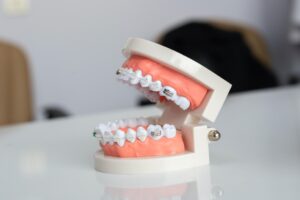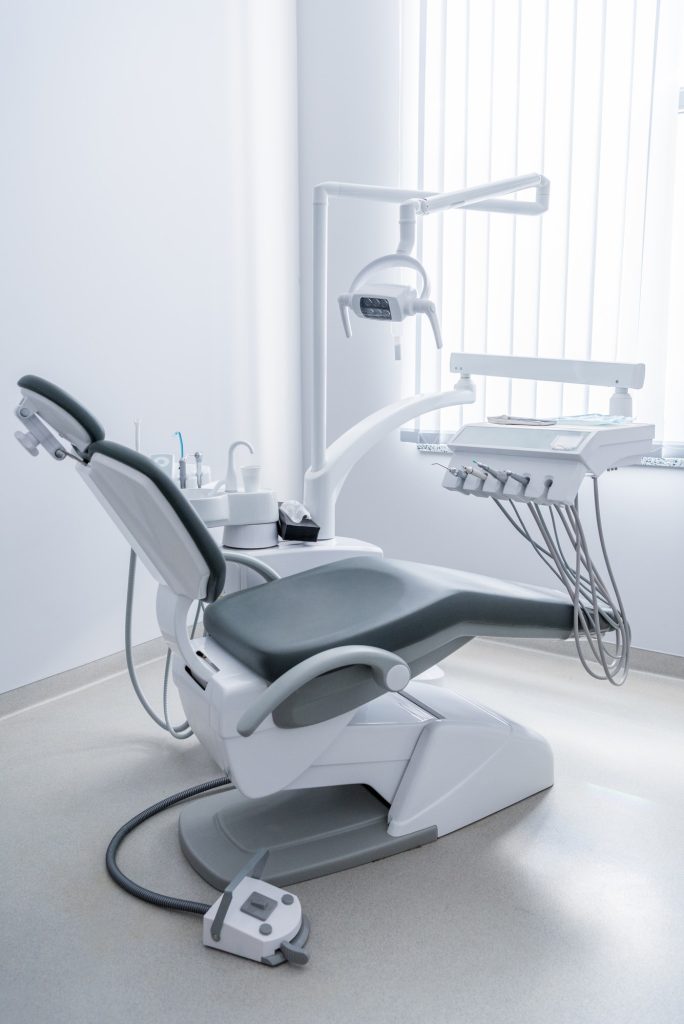For people who wish to improve the appearance of their smile, the teeth veneers process could be a great option. Dental veneers are thin shells placed over the teeth’ front surface. These shells are made of either porcelain or a composite resin material mimicking the natural tooth structure. In this blog post, we will explain dental veneers, discuss why people choose veneers, and provide a brief overview of the veneers process.
Definition of Dental Veneers
Dental veneers are a cosmetic dental treatment in which thin shells cover the front surface of your teeth. They can be made of porcelain or composite resin material. Traditional porcelain veneers tend to be more durable and stain-resistant than composite veneers. Composite resin veneers, on the other hand, are more affordable and can be created and applied within a single visit to your dentist. Porcelain veneers tend to be thicker than composite veneers. For this reason, tooth preparation is required before applying them.
Why Do People Choose Veneers?
There are various reasons people choose veneers. One of the main reasons is to improve the appearance of slightly crooked teeth. In some cases, veneers can be a sensible alternative to braces. Veneers can also help restore the look of chipped, broken or stained teeth. Lastly, veneers can help create the appearance of whiter and straighter teeth.
Consultation
Finding the Right Dentist
Teeth veneers are a delicate dental procedure, and you want to ensure you work with a qualified professional. Choosing the right dentist ensures your veneers are installed correctly and look natural. When looking for a dentist, check their credentials, experience, and reviews. You can also ask for referrals from friends and family or check online forums. Remember, the right dentist should answer all your questions and make you feel comfortable.
 Initial Consultation
Initial Consultation
The initial consultation is a crucial step in the teeth veneers process. During this appointment, your dentist will examine your teeth’ condition and determine if you are a good candidate for dental veneers.
The dentist will also discuss the procedure’s potential benefits and risks and answer any questions or concerns you may have. If dental veneers are right for you, the dentist will take impressions of your teeth to create custom veneers that fit your teeth’ natural structure.
Discussing Goals and Expectations
Before installing veneers, discussing your goals and expectations with your dentist is essential. Remember, everyone’s teeth are different, and what works for one person may not work for another. During this conversation, your dentist will analyse your teeth carefully and help you choose the right materials, size and shape. You can also bring photos of your dream teeth to help your dentist understand what you want. Clear communication is vital to ensure you get the best results possible.
Preparation
Necessary Dental Work
Before getting veneers, it’s necessary to address any underlying dental problems. A routine dental exam is essential to check for issues such as tooth decay, gum disease or infections, which must be treated before performing the veneers procedure. The dentist will also evaluate if veneers are a suitable option for your dental issues. You may need additional work, such as a root canal or a tooth filling, before the veneers can be placed.
Teeth Cleaning
Before the veneers procedure, the teeth must be thoroughly cleaned. Even with regular brushing and flossing, there may still be some plaque buildup on the teeth, which can interfere with the bonding process. Therefore, professional cleaning is necessary to ensure teeth are free of plaque, tartar, and other debris.
Impressions and Moulds
The dentist will take impressions of your teeth and make a mould to create the veneers. The mould allows the dentist to create a perfect fit and shape for your veneers. The office will send the mould to the dental laboratory, where a skilled technician will craft your veneers from high-quality dental materials. This process can take up to two weeks, so be prepared to wait.
Choosing the Right Veneer Shade
The shade of your veneers is an essential factor that must be decided before the procedure. You want your veneers to match the colour of your natural teeth or achieve the desired whiteness level. The dentist will prepare a shade guide to help you choose the perfect hue. Your dentist may take pictures of your teeth and use digital imaging to show you your potential new smile.
Placement
The first stage of the dental veneer procedure is the placement of temporary veneers. Temporary dental veneers are made of a resin material that resembles your natural tooth structure and shape. They protect your teeth and enable you to see the projected outcome of the veneer procedure. Your dentist will remove a thin layer of your tooth enamel to create space for the veneers and then take impressions of your teeth to produce accurate custom porcelain veneers or composite resin veneers that match your natural teeth in colour and size. It may take one to two weeks for the permanent veneers to be ready, so you’ll wear the temporary veneers in the meantime.
Tooth Preparation
Once the permanent veneers are ready, your dentist will remove the temporary veneers and clean your teeth thoroughly. Then, they’ll prepare your actual teeth for the placement of porcelain veneers or composite resin veneers by lightly etching the surface of your teeth and applying dental cement to bond the veneers. The amount of tooth preparation depends on the type of veneers you choose and the extent of damage or misalignment of your teeth. Porcelain veneers tend to require more tooth preparation than composite resin veneers, but they also last longer and resist staining better.
 Bonding Process
Bonding Process
After your teeth are prepared, your dentist will place the permanent veneers on your front teeth to check if their size, shape, and colour match your natural teeth and fit well on your tooth structure. If any adjustments are needed, they’ll modify the profile or shade of the veneers accordingly.
Once you and your dentist are satisfied with the veneers’ look and feel, they’ll use a special light to permanently activate the dental cement that bonds the veneers to your teeth. The bonding process usually takes one to two hours, depending on the number of veneers you need.
Final Adjustments
Although the placement of dental veneers usually results in an immediate improvement of your smile, you might feel some discomfort or sensitivity after the procedure. Your dentist will instruct you on caring for your veneers and alleviate any pain related to teeth grinding or temperature sensitivity. They might also schedule a follow-up appointment to inspect your veneers’ durability and make any necessary final adjustments to their shape or shade.
Post-procedure Care
Once your dental veneers are in place, it’s essential to maintain good oral hygiene habits to prolong their lifespan and prevent future dental problems. Brush your teeth twice daily with a soft-bristled toothbrush and fluoridated toothpaste, floss daily, and avoid chewing on hard or sticky foods that could damage your veneers. If you have a teeth-grinding habit, talk to your dentist about wearing a nightguard to protect your veneers from wear and tear. Also, keep up with your regular dental check-ups and cleanings to detect any signs of decay or gum disease early on, and ask your dental insurance about your coverage for dental veneers.
Benefits and Considerations
 Advantages of Veneers
Advantages of Veneers
One of the most significant benefits of teeth veneers is that they can dramatically improve the appearance of your smile in a short amount of time. Veneers can cover up various dental issues like chipped or discoloured teeth, and they can even change the shape of your teeth to look more symmetrical.
The teeth veneers process can also help restore the natural tooth structure and provide a long-lasting solution to improve the functioning of your teeth.
Potential Concerns
Some potential concerns are worth considering before deciding on this dental procedure. One concern is the tooth preparation process, which involves removing a small amount of the natural tooth structure. This can weaken the tooth and may cause sensitivity or damage. Additionally, porcelain veneers are more expensive than composite veneers and may not be covered by dental insurance. Furthermore, while veneers can improve the appearance of crooked teeth or teeth with gaps, they may not be suitable for those with severely crooked teeth or teeth-grinding habits. Understanding the veneer procedure and discussing all options with your dentist before committing to permanent veneers is important. Alternatives such as temporary veneers or dental crowns may better fit some individuals. Ultimately, weighing dental veneers’ benefits and potential concerns is crucial to make an informed decision about your dental health.
Conclusion
As we conclude, dental veneers are thin shells made of porcelain or composite resin that are permanently adhered to the front teeth to improve their appearance. The veneer procedure typically involves tooth preparation, which may include removing a small amount of natural tooth structure. It’s important to consult with our experienced dentists at Radiant Smile Dental Group to determine if dental veneers are the right option, especially if you have slightly crooked teeth or misaligned, broken or chipped teeth. Don’t let crooked teeth keep you from showing off your smile – consider permanent veneers today! Contact us on (03) 9000 0537 to make your first appointment!
References
Porcelain for veneers
https://pubmed.ncbi.nlm.nih.gov/9893514/
Veneers
https://www.healthdirect.gov.au/veneers
 Now
Now
















